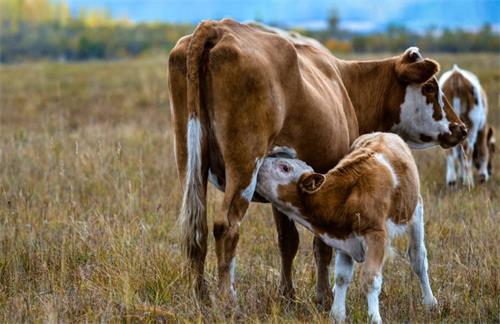The perinatal period, especially postpartum, is the period when cows have the highest risk of reproductive tract infections, so it is particularly important to do a good job in feeding and management during this stage. The use of B-ultrasound for imported cattle also plays an important role in this stage. During the process of cow delivery, it is necessary to do a good job of disinfection to prevent damage to the birth canal.
If the cow's physical condition is good and delivery is smooth, try to let it give birth naturally and avoid artificial assistance to prevent damage to the birth canal. After delivery, imported cows should be frequently used to check their recovery with B-ultrasound. It is not recommended to use physiological saline containing antibiotics to wash the uterus after childbirth. Because the uterus of cows has its own purification function, as long as there is no damage to the reproductive tract or invasion of a large number of pathogenic microorganisms, the reproductive tract will eliminate foreign objects and restore normal state through the regulation of neuroendocrine function. Of course, imported cows need to be regularly examined by B-ultrasound.
If a large amount of rinsing is used, it may actually disrupt the acid-base balance of the reproductive tract mucosa, leading to a potential risk of infection. It has been reported that the timely supply of motherwort, Baijiu, brown sugar, bran water and high-quality hay to cows after delivery can help them recover their strength, fill the rumen, and supplement sugar and calcium in time, which can promote the self purification of the reproductive tract, and prevent the occurrence of postpartum paralysis, cow ketosis, retained placenta, mastitis, and displacement of the true stomach. Imported cattle are examined with B-ultrasound, which is conducive to subsequent estrous breeding.
Improving the reproductive efficiency of cows is crucial for the efficient production of cattle farms, but completing this task cannot be achieved solely by breeders. The reproductive performance of cows is influenced by a series of factors such as feeding management, nutritional level, and health status. Each cattle farm should carefully analyze and summarize their actual situation, propose feasible supporting measures, and implement them effectively in order to maximize the reproductive performance of cows, improve the production efficiency of the farm, and achieve maximum economic benefits. In this process, the use of B-ultrasound for imported cattle has played a significant role.








